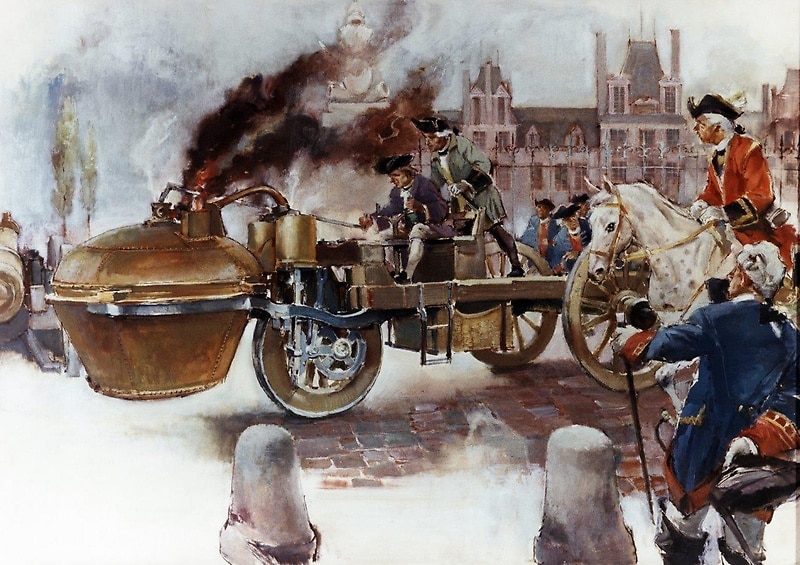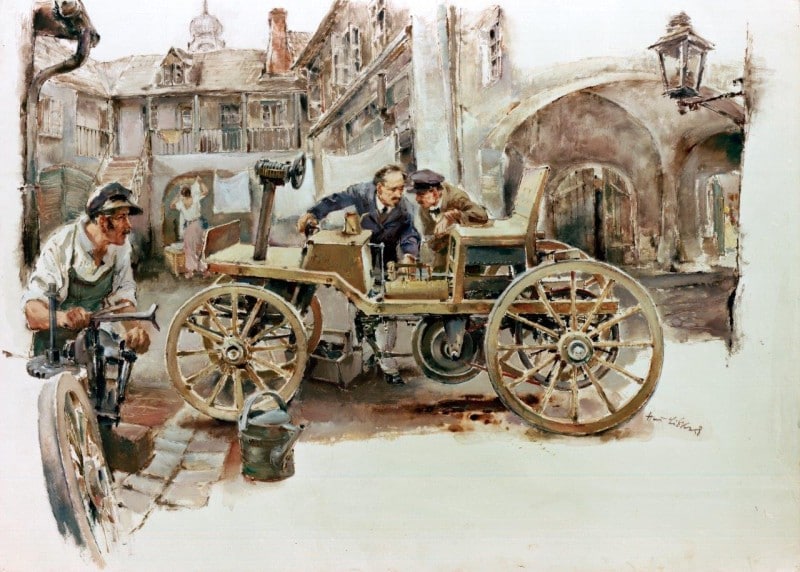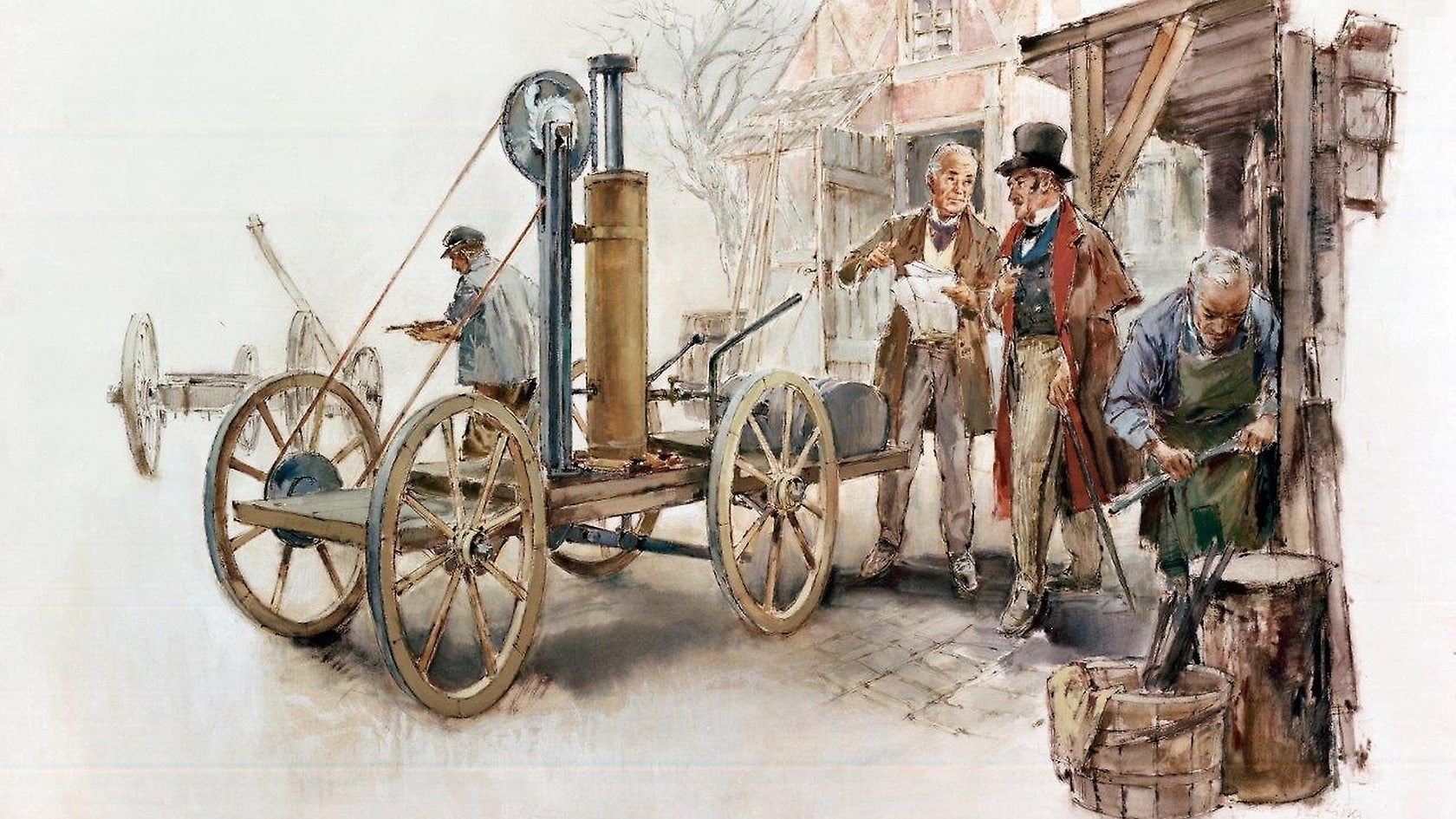Apart from Carl Benz, in the 19th century a number of other inventors also worked on developing a vehicle powered by a combustion engine. These pioneers included the likes of Swiss inventor Isaac de Rivaz (1807), Belgian Jean-Joseph-Etienne Lenoir (1863) and Siegfried Marcus in Austria (1870). In some cases these vehicles only existed on paper, while in others they were small, self-propelled carriages which were not capable of transporting people.

The first ever vehicle to be powered by an engine was the three-wheeled steam cart, weighing in at 4,000 kg, which Frenchman Nicolas-Joseph Cugnot presented in 1769. The subsequent period saw further steam-powered vehicles being built, which in some cases even went into series production. The disadvantages of such vehicles powered by steam engine included the very high weight of the drive system and the need to put the vehicles into operation some time before departure.
The combustion engine, in contrast, promised a host of advantages. In 1807, Isaac de Rivaz developed a simple experimental vehicle designed to be driven by hydrogen gas. In 1863, Jean-Joseph-Etienne Lenoir constructed a motor vehicle fitted with an atmospheric gas engine which he had invented himself.
In 1870, the German Siegfried Marcus, living in Vienna, built his first simple motor vehicle from an ordinary handcart, which he combined with an atmospheric engine which he had designed and built himself. In this particular example, the engine's two flywheels served as rear wheels.

In 1888/89 Marcus developed his second motor vehicle: this featured a four-stroke petrol engine, which was fitted with a surface carburettor and electric ignition system – components which Marcus had designed himself. It is not known whether longer journeys were ever undertaken in this vehicle, and instead of working on developing it further the versatile inventor Siegfried Marcus turned his attention to other matters.
In 1883 the Frenchmen Edouard Delamare-Deboutteville and Léon Malandin had built a combustion engine based on Ottos’s four-stroke engine, and initially tested it in a three-wheeled chassis. After this test vehicle exploded, they built a two-cylinder engine into a carriage, but brought all of their trials to an end after the frame broke.
Carl Benz was the first inventor who not only had the idea of creating an engine-powered vehicle, but also designed, built and tested one. His great achievement lay in the consistency with which he developed his idea of a "horseless carriage" into a product for everyday use, which he then brought to market and as a result made his idea useful for the entire world - unlike the other inventors mentioned here.
